#iris brustein
Explore tagged Tumblr posts
Text
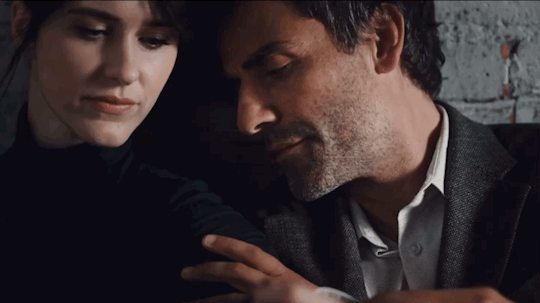
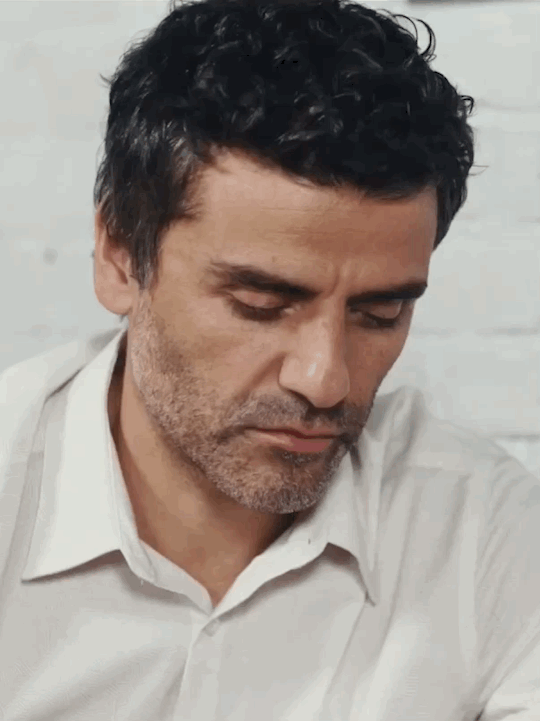

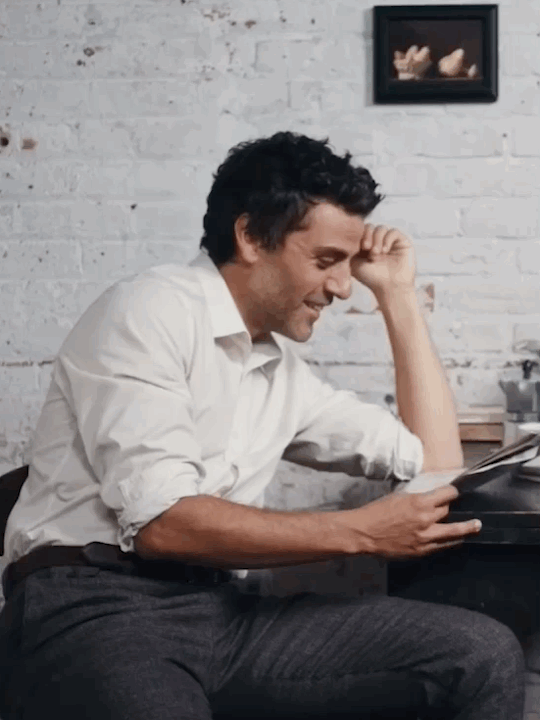

Il materiale di origine: BAM Brooklyn / Oscar Isaac and Rachel Brosnahan Star in Lorraine Hansberry’s The Sign in Sidney Brustein’s Window, beginning February 4, 2023, at BAM Harvey Theater in New York City.
#oscar isaac#rachel brosnahan#the sign in sidney brustein’s window#sidney brustein#iris brustein#gifs#my edit
352 notes
·
View notes
Photo


Rachel Brosnahan in The Sign in Sidney Brustein’s Window Photos by Julieta Cervantes
#Rachel Brosnahan#Iris Brustein#The Sign in Sidney Brustein's Window#Because you guys are only posting the Oscar photos :'(
4 notes
·
View notes
Text
FINAL POLL Hot Vintage Stage Actress Quarterfinals


Nichelle Nichols: Hazel Sharpe in Kicks and Co. (1961 Chicago); Barbara Woodruff understudy in No Strings (1962 Broadway); Jo Britten in Blues for Mister Charlie (1964 Los Angeles)
Rita Moreno: Ilona Ritter in She Loves Me (1964 West End); Iris Brustein in The Sign in Sidney Brustein's Window (1964 Broadway)
Propaganda below the cut.
Nichelle Nichols:
I know everyone knows her got Star Trek and as groundbreaking as that was, she was so much more than that! She actively encouraged and supported women in STEM (specifically astronauts), she was a huge civil rights activist, she was the first female belly button shown on American tv, Obama apparently had a crush on her growing up, and of course she had a stage career before she was on tv




Rita Moreno:







#vintagestagehotties#vintage tournament#vintage poll#vintagestagepoll#vintage ladies#ladies quarterfinals#nichelle nichols#rita moreno
43 notes
·
View notes
Text
Oscar Isaac stars in "The Sign in Sidney Brustein's Window"
an incredible show



“The Sign in Sidney Brustein’s Window” is hard to categorize. It’s a funny, rangy and ambitious play that gives its central character attributes both magnetic and off-putting.
Oscar Isaac masters the art of being Sidney, of allowing us to recognize the blind spots that the character doesn’t, how he can profess his sympathy for equality while ordering his wife to get him a beer. (And with the banjo he picks up and plays, the “Inside Llewyn Davis” star reminds us of his musical chops.)
Miriam Silverman superbly embodies the eldest sister Mavis, a snooty Upper East Side busybody who looks down on Black and Jewish people. Her second act speech about her own surprising sacrifices is one of the production’s high points
--Peter Marks, Washington Post
Sidney Brustein is an intellectual dilettante, convinced he’s destined for cultural preeminence, but mostly succeeding on charm (and his wife’s willingness to wait tables to pay the rent). Mostly, Sid wants the life that allows him to hang out having deep conversations with his similarly half-cocked-idealist pals, and maybe save the world once or twice.
Iris is aspiring actress, but she too wants to be significant more than she knows how to do the work to get there. She peruses Backstage religiously, but hardly ever shows up for an audition. You can almost hear Iris rolling her eyes at Sidney’s ambitions, but it’s easy to have a little more sympathy for her position when she seems to not only be the only one bringing home a paycheck, but also the one who does all the grocery shopping and cooking.
The other standout performance for me was Miriam Silverman’s Mavis, as a woman who’s often mistaken for blinkered rather than restrained; unlike Sidney, Mavis often chooses not to tell the world what she’s thinking. Her scene alone with Sidney, where she reveals many things he doesn’t know both about herself and about her sister Iris, is one of the standouts.
Hansberry is relentlessly unsentimental, even to the point of viciousness; her characters do occasionally admit to ideals, but the play never gives those ideals a lot of enthusiasm or credence.
“Smug” bohemia, as Mavis calls it, is a paper thin layer over all the usual hatreds and hostilities: not just Sidney’s jabs at Iris’s psychotherapy and Alton’s passion for the downtrodden, but the racism and antiSemitism and homophobia and madonna/whore complexes that factor in to the way all the characters think and speak about one another.
Isaac gives a revelatory performance – you see how Iris twists herself to be the woman he imagines, just to feel the beam of his charisma, but you also see every ounce of his meanness and his inability to resist using the cleverest line even if that’s the cruelest dig. And when the self-styled smartest guy in the room figures out he’s been the last to know, you see every beat of the crumbling of Sidney’s illusions on Isaac’s face.
It’s hard to watch, as all the things that Sid thinks he knows – about his wife, about politics, about social change – get dismantled one by one, and as spiritual death spirals down toward an actual death.
-Loren Noveck, Exeunt NYC
#oscar isaac#lorraine hansberry#rachel brosnahan#brooklyn academy of music#the sign in sidney brustein's window#theater#live performance
3 notes
·
View notes
Text
The Sign in Sidney Brustein's Window Review. Lorraine Hansberry's Greenwich Village
There’s something of an inside joke tucked into Lorraine Hansberry’s rarely-produced second Broadway play, which director Anne Kauffman has brought to life in a starry revival at BAM. The group of 1960’s would-be idealists, iconoclasts and intellectuals who hang out in the Greenwich Village apartment of Sidney and Iris Brustein (Oscar Isaac and Rachel Brosnahan) include a painter, a prostitute, a…

View On WordPress
2 notes
·
View notes
Text
youtube
༅༅༅༅༅༅༅༅
A lot of naturally romantic and practically cruel people get it sooner or later. But to really have it - one sticks with it no matter what in the world happens.
༅༅༅༅༅༅༅༅
The Hybridal Rigore Quote Series. LH sets it in this very present, the following week, the following day and the one after that. Infused by dialogue of Sidney Brustein (original cast: Gabriel Dell) and Iris Parodus Brustein (original cast: Rita Moreno) in The Sign in Sidney Brustein’s Window by Lorraine Hansberry; the play first opened on October 15, 1964 in a production directed by Peter Kass at the Longacre Theatre, NY, NY; the playwrite apparently lived to see its 101st performance. The viewable and listenable link is posted by Ringo Starr; https://youtu.be/uCD0fPSsdBA?si=ZOPx4yUa9KazGsRo is a seemingly one-time-use, hypochangeable link to It Don’t Come Easy. YouTube featured artist Ringo Starr. Grateful awareness of the many artists, musicians, and technicians who present these sights and sounds. Words and Music by Richard Starkey (AKA Ringo Starr). -Jivananda (Jim)
0 notes
Note
Hi! I don't know if you take requests or if you can even do this, but if you have the whole show for The Sign in Sidney Brustein's window, could you edit the scene where Iris is getting ready to go to the party, in the blue dress? I've thought about that costume constantly since I saw the play ♥
hi!! i just posted the gifset!
i loveee that blue dress and the way the complete outfit looks with the pearls, white coat, and gloves 🤍
1 note
·
View note
Text
The Sign in Sydney Brustein’s Window
No, “The Sign in Sidney Brustein’s Window” is not some amazing rediscovered masterpiece. But yes, Oscar Isaac and Rachel Brosnahan make it worth seeing, especially for its promising but deeply flawed first act.
“The Sign in Sidney Brustein’s Window” was Lorraine Hansberry’s 1964 follow-up to her Broadway debut five years earlier, “A Raisin in the Sun.” She worked from her hospital bed while battling pancreatic cancer, mining rewrites during rehearsals. The play went on to run three months on Broadway and closed two days before Hansberry died at age 34 on Jan. 12, 1965. Revivals have been rare in the intervening years, and this starry one that opened Thursday on Broadway at the James Earl Jones Theater makes it clear why. The production had previously played at the Brooklyn Academy of Music earlier this year.
It’s difficult to imagine more engaging performances than those being given by Isaac and Brosnahan. They portray the young and troubled married couple that lives in Greenwich Village and are repeatedly called “bohemians.” Sidney is a political activist who goes from one failed entrepreneurial gig to another. Iris is a waitress who longs to be an actress. They’re in love, and from the way Isaac and Brosnahan go after each other, it’s evident the sex is great on a scale of Stella and Stanley Kowalski.
When we meet Sidney and Iris, however, there’s more quarreling than lovemaking going on. Sidney is quickest with the insults. Put him in a room with another person, and there’s bound to be a fight. Iris is spared only when other victims wander into their apartment, and they include Sidney’s young ex-Communist friend (Julian De Niro), his conventional uptown sister-in-law (Miriam Silverman), the gay upstairs-neighbor playwright (Glenn Fitzgerald), an avant-garde artist who is designing Sidney’s recently acquired newspaper (Raphael Nash Thompson) and a leftist political candidate (Andy Grotelueschen), whom Sidney somehow finds time to manage.
When Isaac and Brosnahan are onstage alone, “The Sign in Sidney Brustein’s Window” delivers the theatrical power of Ruth and Walter Lee Younger’s tragically compromised marriage in “A Raisin in the Sun.” Both couples can’t begin to fulfill the American Dream that’s been jammed into their respective heads.
The first act of “Sidney Brustein’s Window” lasts 90 minutes, and about 45 minutes of it is the production’s most compelling as Isaac and Brosnahan love and slug it out under Anne Kauffman’s direction. There is another 45 minutes, however, when Sidney and Iris interact with the other characters, all of whom should go back to the Herb Gardner comedy from which they came. Most cringe-worthy is Silverman’s conservative sister Mavis, a doppelgänger for the conservative brother Nick Burns in “A Thousand Clowns,” which opened on Broadway two years before Hansberry’s play.
Since Sidney and Iris’ marriage essentially ends at the end of Act 1, there’s no action left to dramatize during the almost-as-long second act. Iris disappears for most of its 80 minutes, and Isaac is reduced to a drunk who listens while the supporting characters are given a moment – a very extended moment – to rant about racism (De Niro), an unfaithful husband (Silverman) and the emptiness of success (Fitzgerald).
A new character (the barely intelligible Gus Birney) enlivens things a bit because she looks and acts like a streetwalker (costumes by Brenda Abbandandolo). Her outfit and hair (by Leah Loukas) don’t lie, and after 15 minutes, this prostitute with a heart of tin has committed suicide in the Brustein bathroom. As records go, it may be the fastest suicide in the history of the theater.
And there’s something else that’s phony about this cliché of a character. How could her fiancé (De Niro) not know that his girlfriend, made up for “RuPaul’s Drag Race,” is not having sex with other men for money? Racism may be the least of this guy’s problems.
Before this tragic episode inspires way too much onstage analysis, the prostitute is invited upstairs by the gay guy so she can watch him and his new boyfriend have sex. Fitzgerald manages to be wonderfully enigmatic in his request, while Isaac acts drunk and Kauffman, for her part as director, distracts us from the absurd theatricality of it all by cleverly bringing Brosnahan, De Niro and Silverman into the audience so they can observe the action in silence. They’re a kind of silent chorus, which relates back to something Mavis has told Sidney about her Greek-American father. Hansberry’s play is chockfull of references to all sorts of mythological characters.
Sidney and Iris reunite at the end so she can tell him what a fool he was to back the wrong political candidate. Why a would-be actress with no political chops knows this and Sidney doesn’t is not explained despite “The Sign in Sidney Brustein’s Window” lasting nearly three hours.
0 notes
Text
Two Theater Reviews.

Main navigation
Home
Top Stories
Latest Stories
Two Reviews. The Sign In Sidney Brustein's Window
Summer 1976.
By Robert M Massimi.Published about 14 hours ago • 4 min readComment2
Share

Robert M. Massimi.
"The Sign In Sidney Brustein's Window" at the former Cort Theatre, now the James Earl Jones Theatre deals with a married couple that live in the West Village in New York City. Sidney has closed closed his fold nightclub and is taking over a weekly newspaper called "The Village Cryer". He doesn't want it to be political and here lies the problem that is twofold.
Lorraine Hansberry (Raisin in the Sun" never digs into what could have been a great story if it was written differently. The play takes place in the 60's, a time when the West Village was a hot bed of politics a revolutionary thought. In "Window", we get a smattering of political thought; Alton Scales (Julian De Niro), and Max (Raphael Thompson). But like the writing itself we never get anything of substance.
In Sidney (Oscar Isaac) we get a self absorbed, insulting individual. He treats people with such rudeness in his words. We cannot figure out how his wife Iris (Rachel Brosnanhan) puts up with him. He uses her for his amusement. What is even more confusing is that he is not an accomplished man, in fact, he seems like a failure.
While the two lead actors are good in this play, Miriam Silverman as Mavis steals the show. The other supporting cast is weak and uninspiring. The writing in this two hour forty five minute show circles and circles but never lands anywhere of significance. The show has many lulls in it, like "Raisin in the Sun", it gets very wordy and leaves us drifting away from the play.
The direction by Anne Kauffman is as uninspiring as the writing. The set is constant throughout. It supports the image of a West Village apartment, but isn't anything that is overly spectacular. The costume design doesn't really capture the period. Other than Max, sometimes Sidney and Mavis, the costumes never put us in that period in which it was written for. The lighting is deeper than it appears, the colors used in the play are mostly washed out. It gives the effect of the drab period that is most of the characters lives.
Unlike "Raisin in the Sun", Hansberry never brings a finality the the show. While we see the characters inner secrets, their fears and weaknesses and their willingness to settle, she never brings an ending story to tie out the play. Like a lot of the actors in this show, this play does not belong on Broadway and should have stayed at the BAM.
.........................................................................................................................
"Summer of 1976".
In David Auburn's play at the Friedman Theatre we get two really good actors. In Laura Linney who plays Diana (Little Foxes, Ozark) you always get a first rate performance. Here she plays an uptight intellect who has family money. She is as vulnerable as she is confident as a mother, artist and knowledgeable about the finer things in the world. In Jessica Hecht you get a woman who is comfortable in who she is. She doesn't have the grace that Diana does, but she too is an educated woman who dotes on here child.
The play is ninety minutes long and without intermission. It can be slow at times but for the most part it is a well written play. Director Dan Sullivan never has us feeling to badly for the characters but he does bring many feelings to the body of work. At times we feel sorry for Alice, at other times we laugh at her. The same can be said for Diana, however, her strong character never has us feeling sorry for her as she is a woman in control regardless of any adversity that she comes across.
In the plays scenic design, John Lee Beatty does an admirable job with the set. The stage is well funtionable in that we get a modern feel when the two actors are talking to the audience (they very rarely address each other). When the main set is opened by the lights, we see a warm, friendly trees in the backdrop. In the end we get a wonderful image of an art gallery.
Japhy Weidman does a very nice support to this play. While for the most part the lights are warm and give us an open feel. Hana S. Kim's projection design also supprts the show with an understatement. The costume design by Linda Cho however makes no sense. I can't understand why Linney is in all black. Her personality in this play does not warrant her character in all black. It simply doesn't fit her personality in the show to be clad in all black. Hecht's outfit too doesn't suit her character. She has a simple, hippie type of dress with expensive boots to go with it.
"Summer of 1976" is worth seeing. It is about a brief friendship over the course of three months. The two could not be more opposite but they become fast friends. They support each other on a superficial level; they begin to rely on one another in a very brief period of their lives. While the writing is not deep, it moves along through time neatly.
Laura Linney, Summer 1976, The Sign in Sidney Brustein's Window, James Earl Jones, "A Raisin in the Sun, Hansberry, Jessica Hecht, Broadway, Tony Awards, Oscar Issac, Rachel Brosnahan, Friedman Theatre, John Lee Beatty, Daniel Sullivan, Some Like it Hot, Funny Girl, swmnimbus.org, Metropolitan Magazine, Mann About Town.
ARTComment2
Share
About the Creator
Robert M Massimi.
I have been writing on theater since 1982. A graduate from Manhattan College B.S. A member of Alpha Sigma Lambda, which recognizes excellence in both English and Science. I have produced 12 shows on and off Broadway. I've seen over700 shows
Enjoyed the story? Support the Creator.
Subscribe for free to receive all their stories in your feed. You could also pledge your support or give them a one-off tip, letting them know you appreciate their work.Subscribe For Free
Reader insights
Insights submitted by your readers will appear here.
How does it work?
Comments (1)
Allow comments on this story

Scott Wadeabout 12 hours agoInteresting review. I can only imagine how vibrant West Village was in the 60’s and the disappointment that it wasn’t captured on the stage. Lost opportunity? Summer of ‘76 would be interesting as that was the year I graduated High school and first met the world on my own. Thank you for the insightful reviews.Read moreReply
Keep reading
More stories from Robert M Massimi. and writers in Humans and other communities.
EctoplasimThe Plot Gets Lost in The Séance "Ectoplasm" By Spit and Vigor has many good things working for it. The set and sound by Florence Scagliarini are first rate and so is some of the acting. The gothic set matches The Players Theatre like it was the theaters living room. Both the set and theater give off a "cool vibe". Like the last show put on at The Players by Spit and Vigor (The Wake of Dorcas Kelly), the audience was treated to the same gothic feel and the same undertone of a show that is Avant Garde in writing and design. Unlike "Dorcas", however, "Ectoplasm" is not well written. The show is billed as two woman who work together as mediums: Sara Marshall (Jillian Cicalese) and Kaye Schultz (Caitlin Dullahan-Bates). Sara fully believes in what she does and the life as a medium; Kaye is distraught in that she believes that they are charlatans and do nothing to help people.RMMByRobert M Massimi.about a year ago in Humans
Room for Rent"Bright, airy loft apartment for rent! Breathtaking views! Open floor plan. Solar heat, skylights, energy saving AC. Real hardwood flooring and cathedral ceiling! Automatic sprinkler system! Perfect for a student, particularly if studying astronomy or meteorology. Pets welcome with wings or parachute."DCByDana Crandell7 days ago in Humans
Getting the F%ck back out there.We've all been there, after a relationship ends and we've taken some time to heal. We decide that it's probably time to get back out there....Maybe. It's a scary situation! Putting yourself out there again after being treated like shit. Because we have to figure out what it is that we want from our next relationship. Sure we don't want someone like what we had, but what do we want? I want something very specific and I'm not sure I'll find it. I want to be with someone whose my best friend. I want to belt out music in the car, give them weirdo gifts we joked about months ago, I want to have inside jokes with them. I want to pull up to their house with a car full of snacks and rock music and surprise them with a day at the beach. But most importantly I need to feel safe with that person. If you've read any of my other pieces you'll know I was in an abusive relationship for 6 years. So naturally I'm going to need to feel safe with someone and be able to trust them. This is hard for me. Especially in this hookup culture we seem to be living in. Nobody wants to do any of that special stuff anymore. All they want to do is f%ck and leave. That's not a relationship. I want to actually have a relationship with someone. I want to wake up feeling safe and with a phone full of good morning messages if we're not together. Of course I'd have boundaries like no talking or hanging out with the opposite gender alone. I don't think that's unfair. I think not settling until you find that right person is the best thing you can do. Sure nobodies perfect, but we can't just settle with the first person that's nice to us. Maybe they aren't right for us. Just because someones good to you, doesn't necessarily mean there good for you. That's something I feel like people don't really understand. And frankly it took me a while to understand as well. You need to find someone whose both. I do say quite often that I'm never dating again. And while that may be true! I do want to point out that I've done some reflecting and came to the conclusion that IF someone came along and they fit all of my boundaries and standards, MAYBE I would give them a chance. But with that being said, it may never happen. I may never find someone. I may in fact be single forever and that's not a bad thing. I can still achieve all my dreams without someone in my life. I'd require a lot of patience and reassurance and care. I don't think that's something a lot of people would necessarily be equiped to do. Maybe I need to do some more healing before I get back out there. There is really no rush! We have our whole lives to find someone if that's in the cards for us! We don't need to have someone in our lives to be happy. You need to complete yourself, don't expect someone to complete you! That's unrealistic. Sure you want someone to compliment you but expecting them to complete you is too much. Being upfront with what you want and what you're willing to accept and not willing to accept is something we all need to do. Don't settle for anything less then you deserve. Remember this one thing that we all need to know and it's fairly simple: Never think that almost is good enough for you.ANByAmanda Nicole4 days ago in Humans
These Strings We Pull"I've had it with you! You're useless!" Marianne bowed her head to hide the shame blossoming across her cheeks. "All I ever do is what you ask, Thomas."KRByKelly Robertson4 days ago in Fiction
Written by Robert M Massimi.Comment2
Share
Find us on social media
Miscellaneous links
Explore
Contact
Privacy Policy
Terms of Use
Support
© 2023 Creatd, Inc. All Rights Reserved.
0 notes
Text
Parlor Analysis
Fandom: The Sign in Sidney Brustein's Window Pairing: Iris Brustein/Sidney Brustein Rating: Mature Word Count: 546 words Summary: Sidney, Iris, and their sex problem. A/N: I literally don't know whether anyone will want to read this but I wrote it anyway So.
Sidney had done his fair share of stupid shit in his life, but right up there near the top of the list was that Iris lay with her head in his lap, eyes shut contentedly as he stroked at her hair, and when she asked if there were any little sexy secrets he’d been keeping to himself, he went and told her. He’d told her because at the end of the day he wasn’t ashamed of it. And the two of them were what you might call bohemians; surely her world wasn’t so small that she’d be surprised to learn her husband had some vague aspirations of letting her fuck him.
Read the rest on AO3 here!
0 notes
Text
Hot Vintage Stage Actress Round 3


Rita Moreno: Ilona Ritter in She Loves Me (1964 West End); Iris Brustein in The Sign in Sidney Brustein's Window (1964 Broadway)
Yoshiko Yamaguchi: Lo-Tsen in Shangri-La (1956 Broadway)
Propaganda under the cut.
Rita Moreno:







Yoshiko Yamaguchi:
😍😍😍





#vintagestagehotties#vintagestagepoll#vintage tournament#vintage poll#vintage ladies#rita moreno#yoshiko yamaguchi#ladies round 3
57 notes
·
View notes
Text
Hot Vintage Stage Actress Round 1

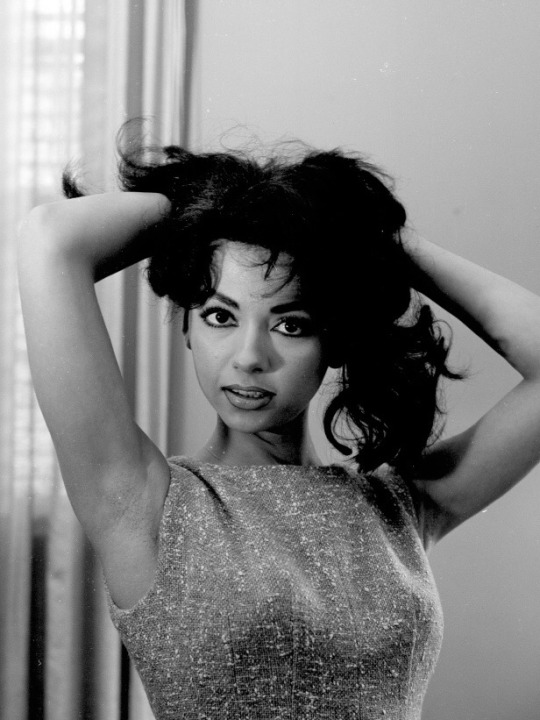
Bea Arthur: Lucy Brown in The Threepenny Opera (1954 Broadway); Vera Charles in Mame (1966 Broadway)
Rita Moreno: Ilona Ritter in She Loves Me (1964 West End); Iris Brustein in The Sign in Sidney Brustein's Window (1964 Broadway)
Propaganda under the cut
Bea Arthur:
I will leave this one to your discretion, since she's more well-known for her TV career, but I think Bea counts as a stage star too. Her career began on stage! She made her Broadway debut as Lucy Brown in The Threepenny Opera (1954-55), had a very prolific curriculum, and won a Tony Award for Best Featured Actress in a Musical for her critically acclaimed performance as Vera Charles in Mame.
As for why you should vote for her... I mean, just take a look at her. She had style, she had class, she emanates sheer elegance, her regal poise is the stuff of legends. I beg you to look up videos of her performances both to hear her voice (she had the most wonderful deep contralto voice, and a unique way of singing that made all her musical performances so captivating!) and to watch her in motion: her hands alone are a DELIGHT to watch. She's everything and as a wee lesbian I cannot help but adore her.

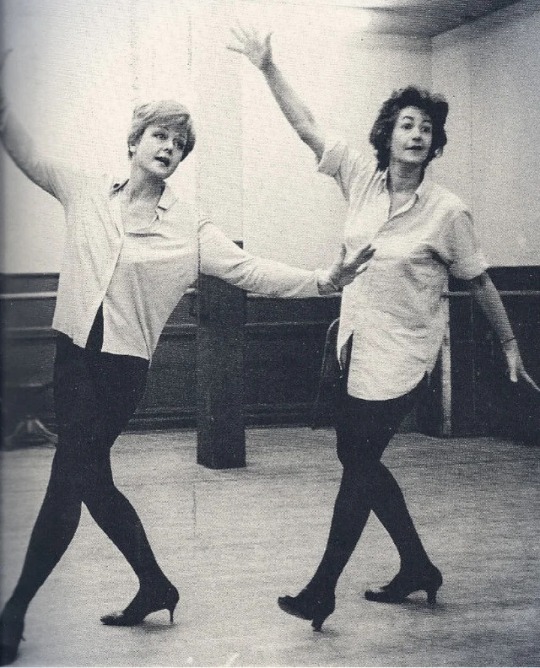
with fellow hottie Angela Lansbury. Look at that spunk! Look at that smile!

once again with Angie in Mame. Her stares are iconic.
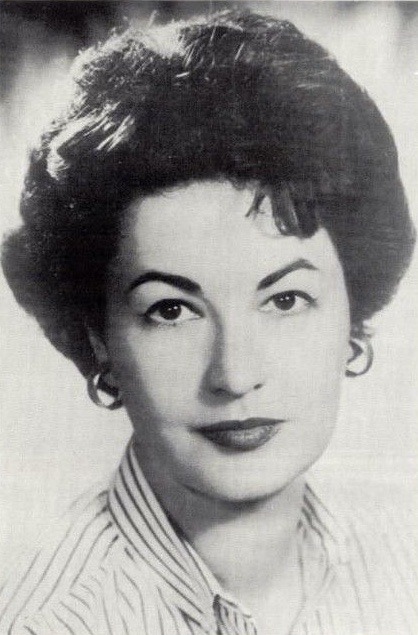
I'm sorry, I couldn't find a cut version of this one online, but I have to submit it anyway because. Her eyes. Her soft smile. Take one look at her and tell me you wouldn't immediately fall on your knees and beg her to marry you.
Rita Moreno:


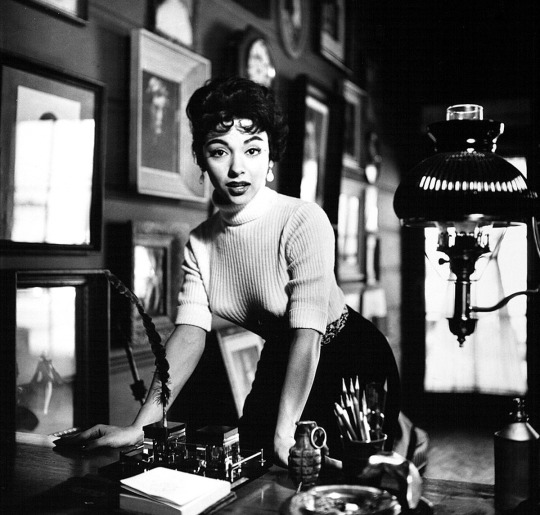
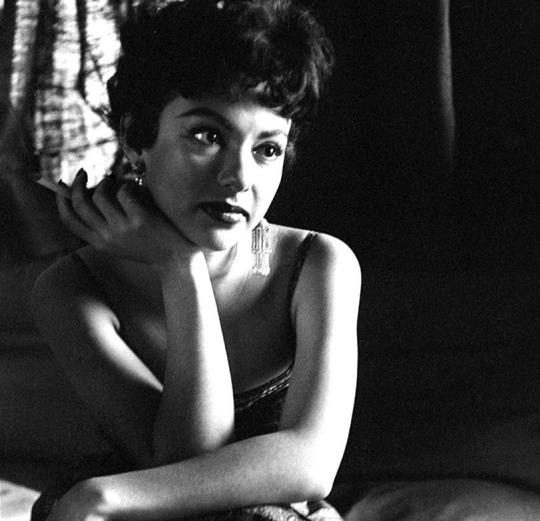



#vintagestagehotties#vintagestagepoll#vintage tournament#vintage poll#bea arthur#rita moreno#ladies round 1#vintage ladies
36 notes
·
View notes
Text
Hot Vintage Stage Actress Round 5


Rita Moreno: Ilona Ritter in She Loves Me (1964 West End); Iris Brustein in The Sign in Sidney Brustein's Window (1964 Broadway)
Vivien Leigh: Titania in A Midsummer Night's Dream (1937 Old Vic); Juliet in Romeo and Juliet (1940 Broadway); Sabina in The Skin of Our Teeth (1945 West End); Blanche DuBois in A Streetcar Named Desire (1949 West End); Grand Duchess Tatania I in Tovarich (1963 Broadway)
Propaganda under the cut.
Rita Moreno:







Vivien Leigh:
It killlllssss me that she was never offered the title of Dame. In my head and heart she will always be Dame Vivien Leigh





#vintagestagehotties#vintage tournament#vintagestagepoll#vintage poll#vintage ladies#ladies round 5#rita moreno#vivien leigh
8 notes
·
View notes
Text
Hot Vintage Stage Actress Round 4


Cléo de Mérode: Phoébe in Endymion et Phoébe (1908 Paris); Corps de ballet in La Danseuse de Pompeii (1912 Paris); Come Over Here (1913 London)
Rita Moreno: Ilona Ritter in She Loves Me (1964 West End); Iris Brustein in The Sign in Sidney Brustein's Window (1964 Broadway)
Propaganda under the cut.
Cléo de Mérode:
Her freckles!!! I’ve also never understood the phrase “neck like a swan” before cause like I’ve never exactly seen anyone with like a neck so wonderful it’s worth pointing out but like Cléo de Mérode has a neck like a swan. No wonder she was the first ever celebrity





Rita Moreno:







#vintagestagehotties#vintagestagepoll#vintage tournament#vintage poll#vintage ladies#cleo de merode#cléo de mérode#rita moreno#ladies round 4
8 notes
·
View notes
Text
Hot Vintage Stage Actress Round 2


Rita Moreno: Ilona Ritter in She Loves Me (1964 West End); Iris Brustein in The Sign in Sidney Brustein's Window (1964 Broadway)
Susan Strasberg: Amanda in Time Remembered (1957 Broadway); Minnie Powell in The Shadow of a Gunman (1958 Broadway); Marguerite Gauthier in The Lady of the Camellias (1963 Broadway)
Propaganda under the cut
Rita Moreno:







Susan Strasberg:




#vintagestagehotties#vintagestagepoll#vintage tournament#vintage ladies#vintage poll#rita moreno#susan strasberg#ladies round 2
9 notes
·
View notes
Text
Great article about The Sign in Sidney Brustein’s Window, which starts previews this Saturday…

Lorraine Hansberry’s “The Sign in Sidney Brustein’s Window” began performances on Broadway in the fall of 1964. It closed the following January, days before Hansberry’s death, having run 101 performances.
“Isn’t that insane?” the director Anne Kauffman asked.
This was on a recent afternoon in a rehearsal room of the Brooklyn Academy of Music, where Kauffman and her stars, the actors Rachel Brosnahan and Oscar Isaac, were preparing for the play’s first major New York revival since a 14-performance run in 1972. Combining the published script with earlier drafts, Kauffman’s production is scheduled to begin performances on Saturday. She directed a revival of “Sign” at Chicago’s Goodman Theater in 2016. But she didn’t feel finished with it.

“I loved that production. I really did,” she said. “But I had no idea what I was doing compared to the depths that we’re going to on this one.”
A couple of days earlier, I’d watch a half-dozen actors, mostly off book, dip their toes in, negotiating a brisk scene that touched — sardonically, sincerely — on issues of race, gender and sexuality. The sign itself, a campaign poster for a local politician, had yet to be hung, which led to jokes: The Sign on Sidney Brustein’s Balcony, The Sign on Sidney Brustein’s Fire Escape. The actors navigated the scene’s particular rhythms and its many props: cigarettes, ashtrays, a fruit bowl, liquor bottles.
“I don’t know where this will go,” Brosnahan, holding a glass, said.
Kauffman responded: “That’s the fun of rehearsal.”
“Sign” is set in Greenwich Village in 1964, territory more or less familiar to both Isaac (“Inside Llewyn Davis”) and Brosnahan (“The Marvelous Mrs. Maisel”). Dedicated to “the committed everywhere,” the script moves between naturalism and a more heightened, poetic style. At its center is the fraught marriage between Sidney (Isaac), a small-business owner and onetime idealist, and Iris (Brosnahan), a would-be actress. All around them are the tumults of the time, which are also the tumults of our time, as each character measures the gulf between who they were, who they are and who they would like to become. In exploring Sidney’s allegiances, some of them misplaced, and Iris’s bid for self-determination, the play opens up questions of competing loyalties, identities and habits of mind.
James Baldwin, who was Hansberry’s friend, described himself, in a speech that he gave to raise funds for it, as deeply moved by the play. “If it cannot survive then we are in trouble,” he said, “because it is about nothing less than our responsibility to ourselves and each other.”
Why was the life of “Sign” so brief? “Very simply put, it’s not a play about Black people,” said Joi Gresham, the director of the Lorraine Hansberry Literary Trust and an adviser on this production. “She was seen as going out of her lane.”

Only one character in “Sign” identifies as Black, which surprised white critics who had buttonholed Hansberry as a writer devoted to Black characters. They had expected another “A Raisin in the Sun,” and not a protest play about Village bohemians.
All these decades later, the play can be understood as a prescient work about apathy, action and mutual aid. David Binder, the outgoing artistic director of BAM and a longtime champion of Hansberry’s oeuvre, sees it as a work whose time has come. “It’s a play about folks trying to do well in the world, in an incredibly turbulent time,” he said during a recent interview. “They’re trying to do right, personally, politically, socially. There’s never been a better time than now to do this play.”
Isaac agreed. “I want it to feel very alive,” he said. This was on that recent Saturday afternoon. Isaac, curled, beside Brosnahan, into a corner of a prop sofa, with Kauffman just opposite. They had stayed after rehearsal to discuss commitment, change and the ways in which a nearly 60-year-old play can still surprise us. These are edited excerpts from the conversation.
Are you sign people? Are there signs that you hang in your own windows?
OSCAR ISAAC My mom’s house is in Vero Beach. Trump country. During the election I put a bunch of Biden stickers on the golf carts.
RACHEL BROSNAHAN My husband and I drove cross country in an RV in 2020. There was signage everywhere. Lawns filled with hundreds of Trump flags. I put a tiny Biden sticker in our window. It couldn’t be too big. We had to sleep there. If we did the play now it would be, “The Post on Sidney Brustein’s Instagram.” It’s all signs and not a lot of substance. You can hang a sign about anything. It’s maybe why I’ve always been a little bit allergic to signs.
ISAAC Makes you feel like a hypocrite.
BROSNAHAN But I go back and forth all the time. I sit on the board of a charitable organization, and I’ve learned how powerful it is to make a post on my Instagram. I guess the answer is you have to do both. You can say what you want, then you have to do it.
What made you want to do this play?
ISAAC It’s around the corner from where I live, a really easy sell. But I tried to get out of it. It’s nights. It’s a big commitment, energetically. I was like, ‘I’m going to read it just to make sure.’ I started reading the first pages. And I was like, ‘No, of course, I’m doing this.’ There’s something about the music of it. It’s undeniable. The draw is just too strong.

BROSNAHAN I had a similar experience. And it couldn’t be further from my house. I’ve spent the last 10 months shooting and really needed a break. But there is a magnetism to this play. I couldn’t stop thinking about it and dreaming about it.
ISAAC It’s like this lost Bach piece. People should hear this music.
Who is Sidney, and what does he believe in?
ISAAC I don’t know. I don’t know if he knows. He is a feeler and someone who’s trying to stop himself from feeling. He’s committed to a lot to things that haven’t panned out. So his hope has dried up. He has a very broad mind and a really keen aesthetic. He’s steeped in the culture of the moment and in the culture of the Village but it’s all starting to dissolve and change. There’s a wave coming — the civil rights movement, the psychedelic movement, Dylan plugging in. And at the heart is this relationship that’s also mutating and shifting. He can’t hold on to anything.
Who is Iris?
BROSNAHAN Iris is also a feeler. And a dreamer. But she doesn’t know how to achieve the dreams. She has a clear picture of what the dream is and no road map. She’s caught between two different waves of feminism. She’s caught between wanting to be cared for and wanting to take care of herself. When she entered into this relationship, she was really happy to be whatever he wanted her to be, to do whatever he wanted her to do, to go wherever he wanted. That was enough. But the world is changing, new conversations are happening. She is in a moment of tremendous change.
The play is nearly 60 years old. What has surprised you about it?
ISAAC The way she talks about identity, that feels eerily prophetic. What’s surprising to me is that this queer Black young woman, in the ’60s, wrote this play that has so much freedom. Every character has moments of extreme selfishness, ignorance and ugliness. Then, within a sentence, they say something that breaks your heart. You don’t see that kind of bravery these days.
BROSNAHAN She gives each and every character the grace to be exactly who they are. She’s extraordinary. And so much of her extraordinary self is in this play. She could hold so many prophetic ideas in her head at once. We are revisiting a huge conversation right now about white apathy and the consequences of that in our political system and world. She explores that with such nuance in this play.
Oscar, you mention identity. Sidney is Jewish as written and you were not raised Jewish. Does that make you feel any particular responsibility?
ISAAC We could play that game: How Jewish are you? It is part of my family, part of my life. I feel the responsibility to not feel like a phony. That’s the responsibility, to feel like I can say these things, do these things and feel like I’m doing it honestly and truthfully.
Has the play made you reflect about your own commitments, your own beliefs?
BROSNAHAN I’ve been very inspired by the play’s criticism of inaction. As someone who can be an absolutist, very all or nothing, it feels like a very hopeful and healthy reminder that you can do something, even something small, even something local. If that’s all you can do, that is enough. If we all do a little bit, we have the ability to make great change. Lorraine believed deeply in people’s ability to make change.
ANNE KAUFFMAN Doing this play and having people come watch it and making sure that it’s accessible, that’s my mission. People need to hear her voice and they need to see this play.
BROSNAHAN We need her in this moment.
KAUFFMAN In every moment. We haven’t even caught up to her. The way that she thinks.
What do you want the audience to experience?
ISAAC I want it to feel very alive. I want it to feel like a happening.
BROSNAHAN I want it to come off of the page. Hopefully people will consider where they do or don’t see themselves in this play and how that moves them.
KAUFFMAN I want people to be exposed to these words at this moment and to know Lorraine Hansberry in a different way. I want to have this be part of the canon. This is not a well-made play. You come expecting to see a Lorraine Hansberry play and this colors way outside the lines. My goal is to let it be wild, not try to tame it.
###
#oscar isaac#rachel brosnahan#the sign in sidney brustein's window#anne kauffman#lorraine hansberry#bam#brooklyn academy of music#new york city#new york times
42 notes
·
View notes